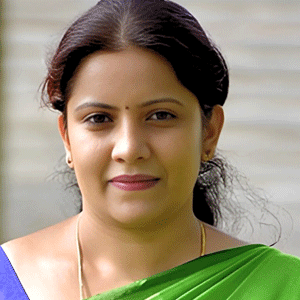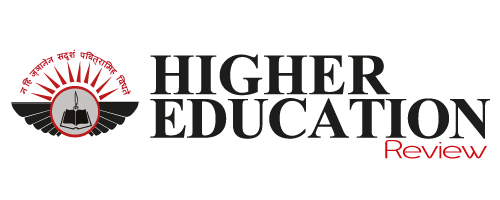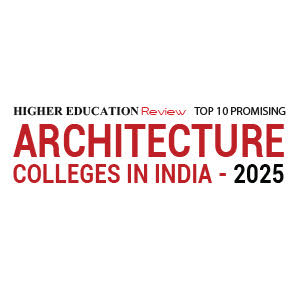
Siddaganga Institute Of Technology: Embracing Legacy & Innovation For Future-Ready Architects
By Dr. Madhumathi P, Head of the Department
India’s architectural education landscape is rich and diverse, shaped by centuries of design heritage and evolving contemporary practices. Architecture colleges across the country strive to balance creativity with technical expertise, preparing students to address complex environmental, social, and cultural challenges. From institutions rooted in historical traditions to those embracing modern, sustainable design, architecture education in India is growing rapidly, fostering a new generation of innovative and responsible architects.
Among the rising institutions in this field is the School of Architecture at Siddaganga Institute of Technology (SIT), Tumkur. Established in 1992, the School was founded in response to the increasing need for architectural education that connects local relevance with a global outlook. It operates under the Sree Siddaganga Education Society, an organization known for its strong service-oriented educational ethos and currently managing around 153 institutions across Karnataka.
Over the past two decades, the SIT has built a reputation for academic excellence and progressive thinking. It is now ranked among the top 10 most promising architecture colleges of 2025. The School's philosophy extends beyond traditional academics, its vision is to nurture not just skilled designers, but architects who are socially aware, environmentally conscious, and culturally sensitive.
From the beginning, the institute has emphasized innovation, sustainability, and community engagement. The curriculum integrates critical thinking, empathy, and human-centered design, encouraging students to explore architecture as a tool for positive societal transformation. With a focus on developing well-rounded professionals, Siddaganga Institute of Technology – School of Architecture continues to inspire young minds to build a better world, one structure at a time. Its strong foundation, dynamic approach, and commitment to values make it a standout choice for aspiring architects in India.
A Dynamic and Evolving Approach to Architectural Education
The B.Arch program at Siddaganga Institute of Technology – School of Architecture offers a well-rounded balance of structure and creative flexibility. While it follows the curriculum prescribed by the Council of Architecture, the program places strong emphasis on the design process rather than merely the final outcomes. Students are encouraged to develop their own unique design philosophies, fostering independent thought and innovation.
The curriculum is enriched with a wide range of electives including Urban Studies, Interior Design, Graphic Narratives, Adaptive Reuse, and Digital Storytelling. Opportunities such as exhibitions, competitions, and interdisciplinary collaborations further help students become dynamic, self-directed professionals. A strong and engaged alumni network, many of whom practice globally, return as mentors and critics, adding real-world insight and community connection.
Faculty at the School are not only educators but also practicing professionals and researchers, with expertise in areas like urban design, conservation, and parametric design. Many hold or are pursuing doctoral degrees. The institution maintains academic quality through peer reviews, audits, and continuous professional development.
A culture of approachability and mentorship defines the student-faculty relationship, allowing academic advisors to become lifelong guides. This holistic, forward-thinking model prepares students for meaningful contributions to the architectural profession worldwide.
A Campus that Inspires Learning and Accessibility
The School of Architecture at Siddaganga Institute of Technology is designed to reflect its progressive pedagogy. Its open studios, materials museum, construction yard, and both manual and digital workspaces support hands-on, immersive learning. A state-of-the-art digital fabrication lab, featuring 3D printers, laser cutters, and robotic arms, equips students for contemporary design challenges. Complementing this are a specialized architectural library, exhibition galleries, and informal discussion zones that encourage collaboration and idea exchange.
The campus itself serves as a learning environment, with walkable landscapes, exposed structural systems, and varied climatic zones offering opportunities for experiential education. Accessibility remains a core principle. The institute provides a range of scholarships, including merit-based, government-funded, and need-based awards. It also supports students in securing external architectural grants and study abroad opportunities, ensuring that talent is never held back by financial constraints.
The academic calendar is enriched with theme-based workshops on topics like computational design and sustainability, along with lectures, field trips, and student-led initiatives. Students actively participate in NASA and ZONASA events and collaborate with NGOs, government bodies, and rural communities through dedicated studios. Internships with leading firms in India and abroad further cultivate professional readiness and global exposure, making students well-rounded and future-ready.
Industry Oriented Learning
At SOA-SIT, preparing students for the architectural profession extends far beyond software skills and studio assignments. The institution fosters an industry-ready mindset through practical exposure such as site visits, live client-based studios, and semester-long internships during the final year. Workshops on parametric design, climate responsiveness, and digital fabrication further enhance students’ technical and creative abilities. Construction workshops integrate traditional methods with modern technology, while studio projects rooted in real sites and communities develop students’ sensitivity to complex, real-world design challenges.
At SOA-SIT, preparing students for the architectural profession extends far beyond software skills and studio assignments
SOA-SIT maintains close ties with the industry through advisory boards of practicing architects who help keep the curriculum relevant and up to date. The program includes live client projects, construction documentation, participation in Smart City hackathons, and heritage documentation drives. Regular firm visits, industry talks, and portfolio reviews prepare students to be job-ready or entrepreneurial from day one.
Digital proficiency is emphasized from early on; starting in the third semester, students learn software like AutoCAD and SketchUp, progressing to advanced tools like BIM by later semesters, with practical application integrated into their projects. This holistic approach ensures graduates are well-prepared for the evolving demands of the architecture industry.
A Future-Ready Architecture Education
Siddaganga Institute of Technology, established in 1963, carries a rich educational legacy that recently celebrated 75 years of excellence. The institute is actively expanding its facilities and academic offerings to stay ahead of global trends. With plans to establish a Design Innovation Lab and a Climate Responsive Research Cell, the institute aims to foster student research and exploration before graduation. Additionally, international exchange programs are in the pipeline to provide global exposure, while a focus on entrepreneurship and architectural startups will nurture innovation and professional readiness. The curriculum itself is evolving, featuring trending electives like AI in Architecture and integrating landscape and digital tools into design studios. Vertical studios encourage collaboration among students from different academic years, and project exchanges with other colleges promote cross-learning and broaden perspectives. These initiatives reflect Siddaganga Institute of Technology’s commitment to preparing socially conscious, versatile, and future-ready architects.


